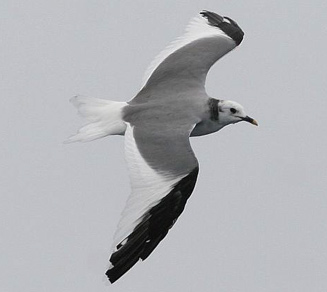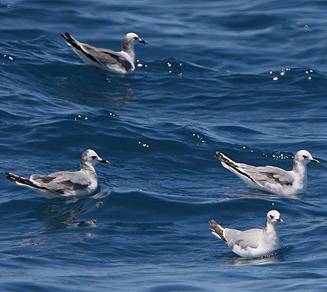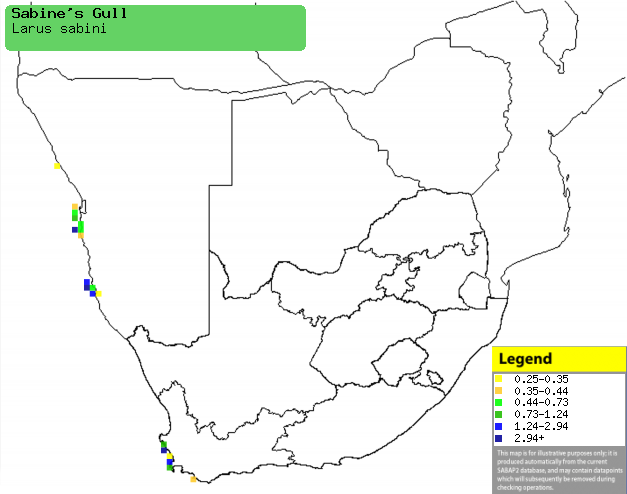|
Larus sabini (Sabine's gull)
Mikstertmeeu [Afrikaans]; Vorkstaartmeeuw [Dutch]; Mouette
de Sabine [French]; Schwalbenmöwe [German]; Gaivota de Sabine
[Portuguese]
Life
> Eukaryotes >
Opisthokonta
> Metazoa (animals) >
Bilateria >
Deuterostomia > Chordata >
Craniata > Vertebrata (vertebrates) > Gnathostomata (jawed
vertebrates) > Teleostomi (teleost fish) > Osteichthyes (bony fish) > Class:
Sarcopterygii (lobe-finned
fish) > Stegocephalia (terrestrial
vertebrates) > Tetrapoda
(four-legged vertebrates) > Reptiliomorpha > Amniota >
Reptilia (reptiles) >
Romeriida > Diapsida > Archosauromorpha > Archosauria >
Dinosauria
(dinosaurs) > Saurischia > Theropoda (bipedal predatory dinosaurs) >
Coelurosauria > Maniraptora > Aves
(birds) > Order: Charadriiformes
> Family: Laridae > Genus: Larus
 |
 |
| Sabine's gull, offshore from Cape Town, South Africa. [photo
Trevor Hardaker ©] |
Sabine's gull, offshore from Cape Town, South Africa. [photo Trevor Hardaker ©] |
Distribution and habitat
Mainly breeds above 60° North in Eurasia and North America,
travelling south in the non-breeding season to the Pacific coast of South
America as well as the entire cold, western coast of Africa. Within southern
Africa it is common offshore of Namibia and western South Africa, while
more scarce along the southern coast up to KwaZulu-Natal. It spends most of its
time out to sea on the continental shelf, and is rarely seen ashore.
|
 |
|
Distribution of Sabine's gull in southern Africa,
based on statistical smoothing of the records from first SA Bird Atlas
Project (©
Animal Demography unit, University of
Cape Town; smoothing by Birgit Erni and Francesca Little). Colours range
from dark blue (most common) through to yellow (least common).
See here for the latest distribution
from the SABAP2. |
Movements and migrations
Mainly present in southern Africa in the period
from September-May, although it very rarely stays over winter.
Food
It mainly eats small fish, marine invertebrates and offal
and discards from fishing vessels, doing most of its foraging by plucking prey or
food scraps from the sea surface, or upending to catch animals at a greater
depth.
Threats
Not threatened.
References
-
Hockey PAR, Dean WRJ and Ryan PG 2005. Roberts
- Birds of southern Africa, VIIth ed. The Trustees of the John Voelcker
Bird Book Fund, Cape Town.
|
